 Contact us
Contact usIntent
Community
Studio Organo Concepts
About Us
Subsidaries
Studio Organo
TS RERA No.P02400003403.
TS RERA No.P02400003403.
.webp)
Author : Rakesh Koti
Part 1 - Designing for energy minimisation.
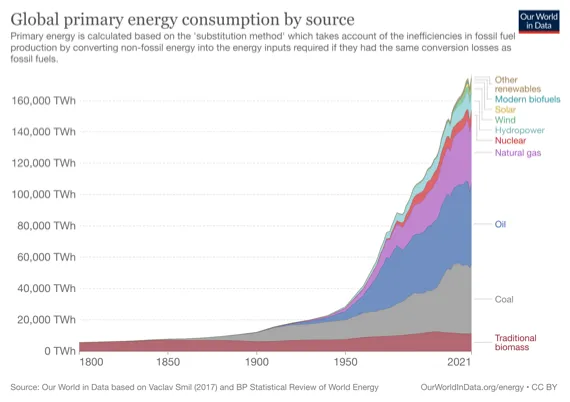
When fossil fuels are burned, they release large amounts of carbon dioxide, a greenhouse gas, into the air. Greenhouse gases trap heat in our atmosphere, causing global warming. Already the average global temperature has increased by 1C.
For most of human history, biomass was the predominant fuel source to generate energy in the world (1). This was mostly wood, plant waste, and charcoal.
Around the middle of the 20th century, there was a rapid need for more and more power generation and the energy mix switched from biomass to coal and oil. The developments that ensued and the progress in science and technology rests entirely on the fact that the world was covered by coal, oil and later, natural gas.
The adverse effects of uncontrolled use of these new fuels took more than 50 years to come to notice.
In India, even now, 58% of the power production is through non-renewable sources with the rest through renewable resources (2).
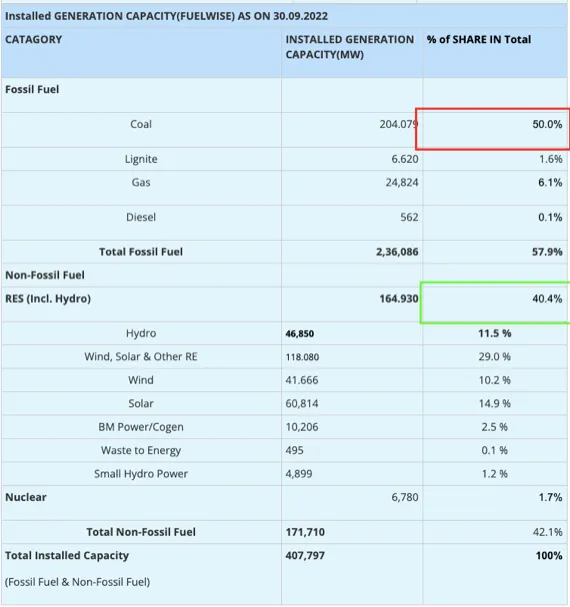
While the country is moving towards more and more renewables, solar is still 15% of the total energy mix in the country.
With this energy mix, can there be a possibility of eliminating fossil fuels or not using energy generated through fossil fuels? In other words, is it possible to design a community that is completely off-grid with energy produced only through renewable sources of energy?
Potential to produce renewable energy in high-end apartments in Hyderabad
To answer that question, it is important to analyse the potential for energy generation in communities in Hyderabad.
To take a typical example, let us consider a high-rise residential community built on 6 acres, with 300 flats (or 50 homes per acre density) with each home of 3000 sq.ft.
For such a project, the roof top area available would be approximately, 45,000 sq.ft. Assuming the rooftop can be completely used to install solar, the total energy production could be close to 500 kW while the energy consumption could be approximately 1800 kW. Due to the higher density, the maximum renewable energy production can cater to not more than 30% of the overall energy demand. The rest of the 70% is produced as per the energy mix shown above.
Even if there is a potential to install more solar panels, is this the right way to design homes for net-zero?
Design of homes at Organo Kandawada
Good design starts with reducing energy requirement in the first place. Almost 25% of the annual energy consumption in a home is due to air conditioning loads. To reduce this, it is necessary to cut down on heat coming into the home.
Heat comes into buildings through walls and roof.

To reduce the amount of heat, the building must have elements that cut down radiation coming into the building through radiation through walls and roof as well as conduction and convection heat transfers.
Designing energy efficient homes at Kandawada
At Kandawada, radiation coming through glass surfaces is protected using Serge Ferrari fabric which cuts down 90% of UV rays and radiation while allowing visual comfort (3). (See below)
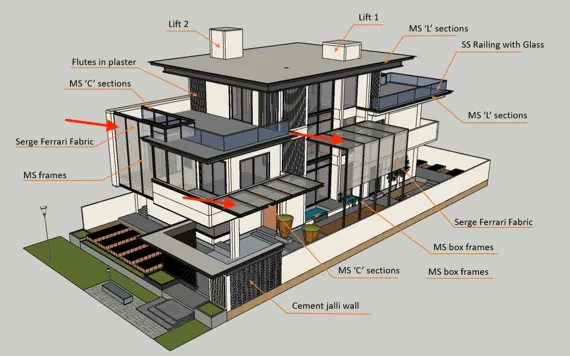
The south side, where there is the maximum amount of radiation hitting the walls of the house, is protected by a double wall. (See below)

The solar panels on the rooftop protect from the radiation hitting the roof of the house. This is very important as radiation falls on the roof throughout the day, regardless of the direction of the sun.
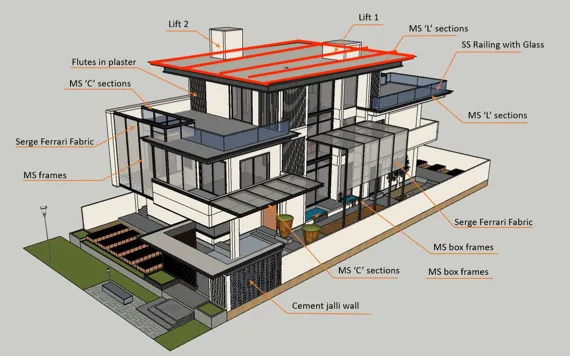
Overhangs at strategic places to further cut down radiation falling on windows.
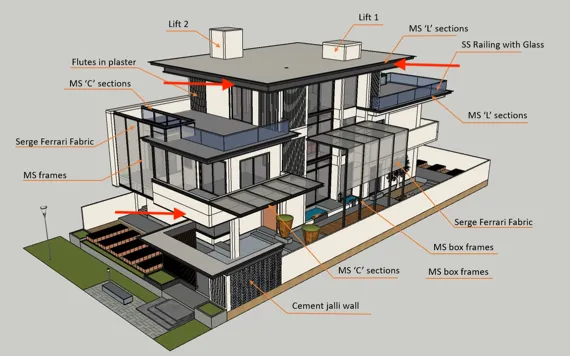
For Kandawada, we are also exploring installing over deck insulation to further cool the roof of the house.
With these passive strategies, there is about 50% reduction in unwanted heat coming into the building.
Heat gets trapped in buildings at night
One property of concrete is that it traps heat within and releases slowly indoors into the house at night. Have you ever felt your home become hotter during the evenings and nighttime compared to afternoons in the summer? This is trapped heat being released into the building. Is this a property of the material? Can building homes with rammed earth or other materials help in reducing this heat influx at night?
Analysis shows that, the type of material used in walls really has very little effect on controlling this nighttime heat. Night ventilation plays a huge role in flushing out this and improving comfort and reducing air conditioning load. The difference is almost 25% increase in comfort hours.

Now that we have arrived at a home that needs much less energy to cool, in the next issue, design optimisation and possibilities of creating off-grid communities will be discussed.
Getting rid of fossil fuels–Part II
About Organo Eco Habitats
At Organo we co-create eco-habitats that celebrate living. Eco-habitats are sustainable communities which offer an intersection of urban conveniences and rural experiences providing a way of life integrated with nature and focussed on wellbeing.
Organo creates integrated holistic living environments, where the residents can take part in collective natural farming and witness the food they eat. Having already delivered India’s first rurban commune- Organo Naandi, Organo is coming up with a 182-unit eco-habitat called Organo Antharam near Chevella.
To know more about our eco-habitat communities please call 9071123446 or write to us on info@organo.co.in .
